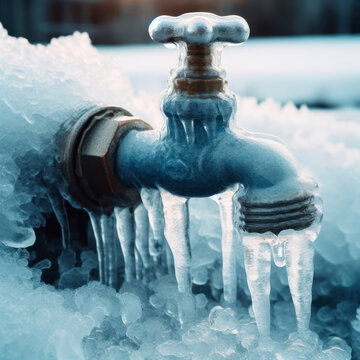Essential Tips to Avoid Frozen Plumbing in Winter: Specialist Insights
Essential Tips to Avoid Frozen Plumbing in Winter: Specialist Insights
Blog Article
Just how do you feel on the subject of How to Prevent Your Pipes From Freezing?

Cold weather can damage your pipes, specifically by freezing pipes. Below's exactly how to prevent it from occurring and what to do if it does.
Introduction
As temperature levels decrease, the risk of icy pipelines rises, potentially resulting in pricey repairs and water damages. Comprehending just how to prevent frozen pipelines is important for house owners in chilly climates.
Comprehending Frozen Pipelines
What creates pipes to freeze?
Pipelines freeze when subjected to temperatures below 32 ° F (0 ° C) for extended periods. As water inside the pipes ices up, it broadens, taxing the pipeline wall surfaces and possibly creating them to rupture.
Risks and problems
Frozen pipes can cause water disturbances, residential property damage, and costly repairs. Burst pipes can flooding homes and trigger comprehensive structural damages.
Signs of Frozen Pipes
Identifying frozen pipelines early can prevent them from breaking.
Exactly how to identify icy pipes
Look for lowered water flow from faucets, unusual smells or sounds from pipes, and visible frost on exposed pipelines.
Avoidance Tips
Shielding prone pipes
Cover pipes in insulation sleeves or make use of heat tape to protect them from freezing temperature levels. Focus on pipelines in unheated or exterior areas of the home.
Home heating strategies
Maintain indoor areas sufficiently heated, particularly locations with plumbing. Open cupboard doors to enable cozy air to circulate around pipes under sinks.
Shielding Outside Pipes
Yard hose pipes and exterior taps
Separate and drain yard hoses before wintertime. Mount frost-proof spigots or cover exterior faucets with protected caps.
What to Do If Your Pipelines Freeze
Immediate actions to take
If you believe icy pipelines, maintain taps available to relieve pressure as the ice melts. Use a hairdryer or towels soaked in warm water to thaw pipes slowly.
Long-Term Solutions
Architectural modifications
Take into consideration rerouting pipes far from exterior wall surfaces or unheated locations. Add added insulation to attic rooms, basements, and crawl spaces.
Upgrading insulation
Buy high-grade insulation for pipelines, attic rooms, and wall surfaces. Appropriate insulation aids maintain consistent temperature levels and lowers the risk of icy pipelines.
Final thought
Preventing frozen pipes needs aggressive measures and quick reactions. By understanding the reasons, indicators, and safety nets, house owners can protect their plumbing during cold weather.
5 Ways to Prevent Frozen Pipes
Drain Outdoor Faucets and Disconnect Hoses
First, close the shut-off valve that controls the flow of water in the pipe to your outdoor faucet. Then, head outside to disconnect and drain your hose and open the outdoor faucet to allow the water to completely drain out of the line. Turn off the faucet when done. Finally, head back to the shut-off valve and drain the remaining water inside the pipe into a bucket or container. Additionally, if you have a home irrigation system, you should consider hiring an expert to clear the system of water each year.
Insulate Pipes
One of the best and most cost-effective methods for preventing frozen water pipes is to wrap your pipes with insulation. This is especially important for areas in your home that aren’t exposed to heat, such as an attic. We suggest using foam sleeves, which can typically be found at your local hardware store.
Keep Heat Running at 65
Your pipes are located inside your walls, and the temperature there is much colder than the rest of the house. To prevent your pipes from freezing, The Insurance Information Institute suggests that you keep your home heated to at least 65 degrees, even when traveling. You may want to invest in smart devices that can keep an eye on the temperature in your home while you’re away.
Leave Water Dripping
Moving water — even a small trickle — can prevent ice from forming inside your pipes. When freezing temps are imminent, start a drip of water from all faucets that serve exposed pipes. Leaving a few faucets running will also help relieve pressure inside the pipes and help prevent a rupture if the water inside freezes.
Open Cupboard Doors
Warm your kitchen and bathroom pipes by opening cupboards and vanities. You should also leave your interior doors ajar to help warm air circulate evenly throughout your home.

I'm very taken with Preventing and dealing with frozen pipes and I'm hoping you liked my page. Loved our piece of writing? Please quickly share it. Let others locate it. Thanks for going through it.
Appointment Report this page